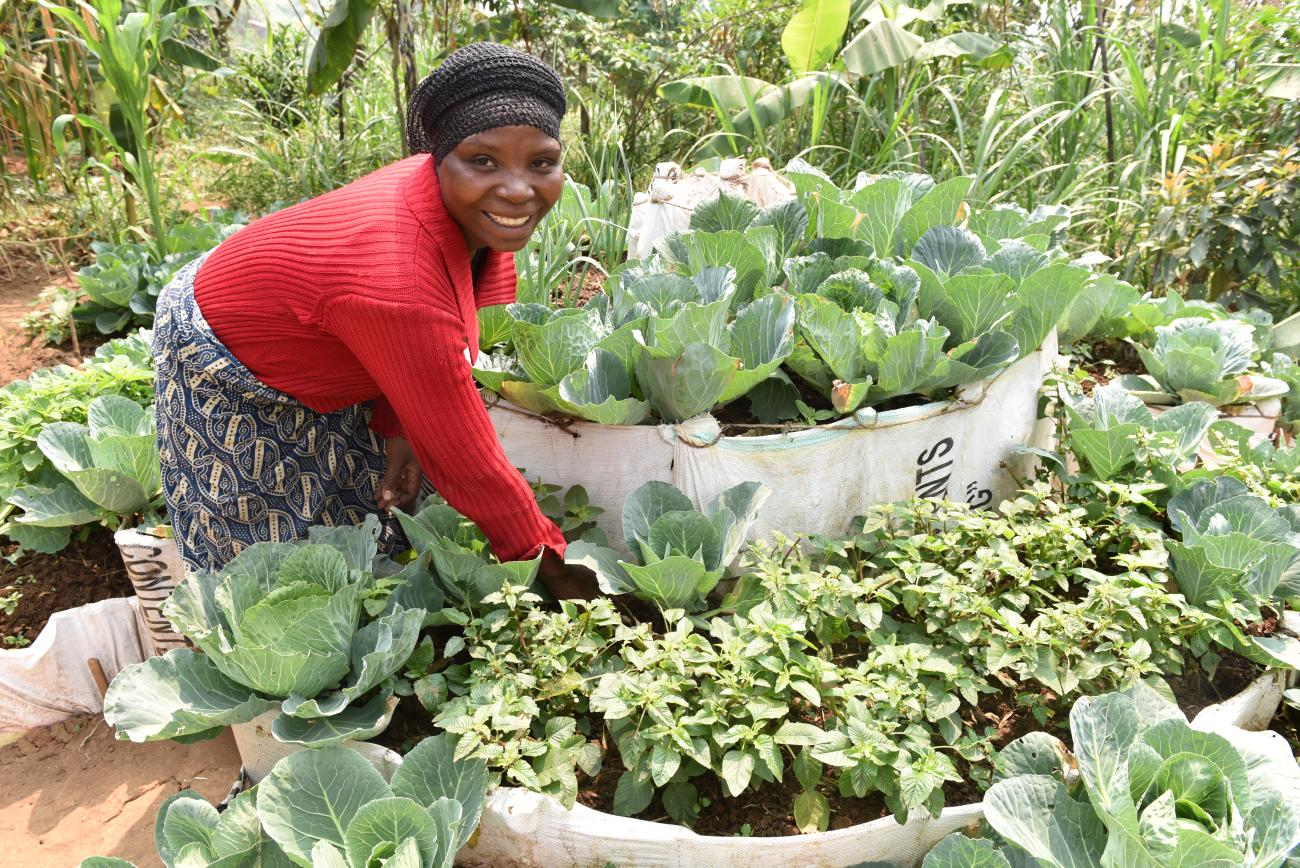Delivering as One to Reduce Chronic Malnutrition in Rural Rwanda

Through the joint programme, the UN is supporting the government of Rwanda to reach its goal of reducing stunting to 19 percent by 2024.
With support from the people of Switzerland through the Swiss Agency for Development and Cooperation (SDC), the United Nations is applying a multi-sectoral approach to address chronic malnutrition in Rwanda. The Food and Agriculture Organization of the United Nations (FAO), the United Nations Children Fund (UNICEF), the United Nations World Food Programme (WFP), and the World Health Organization (WHO), are implementing a One UN comprehensive joint nutrition programme, each applying its comparative advantage and expertise to effectively fight chronic malnutrition.
According to the Demographic and Health Survey (DHS-2015), stunting in Rwanda remains high, at 38 per cent. Through the joint programme, the UN is supporting the government of Rwanda to reach its goal of reducing stunting to 19 per cent by 2024. Reducing chronic malnutrition requires a multi-sectoral approach. The joint programme focuses on addressing immediate causes, such as household food insecurity, poor dietary diversity and inappropriate dietary and care practices. Furthermore, the programme supports the government to strengthen capacities to improve nutrition service delivery and roll out innovative tools at the community level.
Empowering community members to improve dietary practices
Two of Alvera’s three children suffered from malnourishment. Through the One UN joint nutrition programme, mothers like Alvera were provided with a dairy goat and a pig, along with training on small livestock rearing, kitchen garden construction, income-generating activities, and savings. She was also trained on how best to prepare hygienic and nutritious food for her family.
In a period of less than two years, her children’s nutrition had dramatically improved. Through the joint programme, Alvera was able to easily access fertilizers to apply to her kitchen garden, increasing her family’s supply of fresh vegetables. The family now regularly drinks goat milk. “My children are no longer malnourished,” she said with a smile.
Alvera’s pig also began producing piglets which she now sells to community members at a competitive price, increasing her income. She is also contributing to a community-based savings group in her area. With her additional income and savings, she is able to pay her children’s school-related expenses and make a contribution to the family’s medical insurance. She was also able to renovate her house, greatly improving the family’s hygiene and sanitation.
Enhanced household access to micronutrients
For children in Rwanda, micronutrient deficiencies are an ongoing and critical challenge. Many children lack iron in their diets, with anaemia affecting 37 per cent of children between six months and five years old. Through the UN joint nutrition programme, some of Rwanda’s most vulnerable households are able to access micronutrient-dense diets through community nutrition programmes. Families are provided micronutrient powders – small sachets of vitamins and minerals – to sprinkle into their children’s meals. These micronutrient powders are reducing rates of anaemia in children under two years, supporting their healthy growth and development and ultimately reducing the risk of malnutrition.
Micronutrient powders have also been integrated into the national health supply chain. This means parents and caregivers can access micronutrient powders in their local health centres or through their community health workers – completely free of charge. Community health workers also monitor use of these powders, tracking who is receiving them and how they are being used.
By 2017, Rwanda had become the first African country to achieve national coverage of micronutrient powders, impacting around 432,000 children between the ages of 6 months and two years, or 80 per cent of targeted children.
Addressing micronutrient deficiencies in children is essential to reducing chronic malnutrition. Through support from this joint nutrition programme, the Government of Rwanda has improved procurement, storage and delivery of nutrition supplies like micronutrient powders, aiding in the fight against stunting across the country.
Innovations in tracking child linear growth
The UN, through the joint programme is able to strengthen capacities of government community health workers and contribute to improving nutrition service delivery at the community level. With this support, the Government has rolled out innovative tools such as length mats at the community level to ensure timely detection of growth faltering which could result in child stunting.
The use of length mats helps community health workers to track linear growth of children as a part of a growth monitoring programme in four districts in northern and southern Rwanda. Use of length mats empower caregivers and community leaders to take early preventative actions against stunting for children under two years old.
The roll-out of the length mats was coupled with training on the revised national maternal, infant and young child nutrition counselling cards to strengthen health care providers’ skills on nutrition education and counselling. This has improved the feedback loop between health care providers and caregivers of children under two years to further address stunting.
Strengthening capacity to improve nutrition service delivery
Through the joint nutrition programme, the UN is able to support the Ministry of Health and the National Early Childhood Development Program (NECDP) to assess and strengthen the Baby Friendly Hospital initiative (BFHI) and nutrition counselling across the country. Community health workers across the country have been empowered to improve counseling services to improve nutrition by using counselling cards. These behaviours change communication tools help improve breastfeeding, infant and young child feeding practices at the household level.
Further, through the joint nutrition programme, comic books, and training manuals have been developed in partnership with the Ministry of Education for primary school teachers to promote health and nutrition behaviors among students. These materials encourage good nutrition practices, and food and water safety at the household level.
================================








